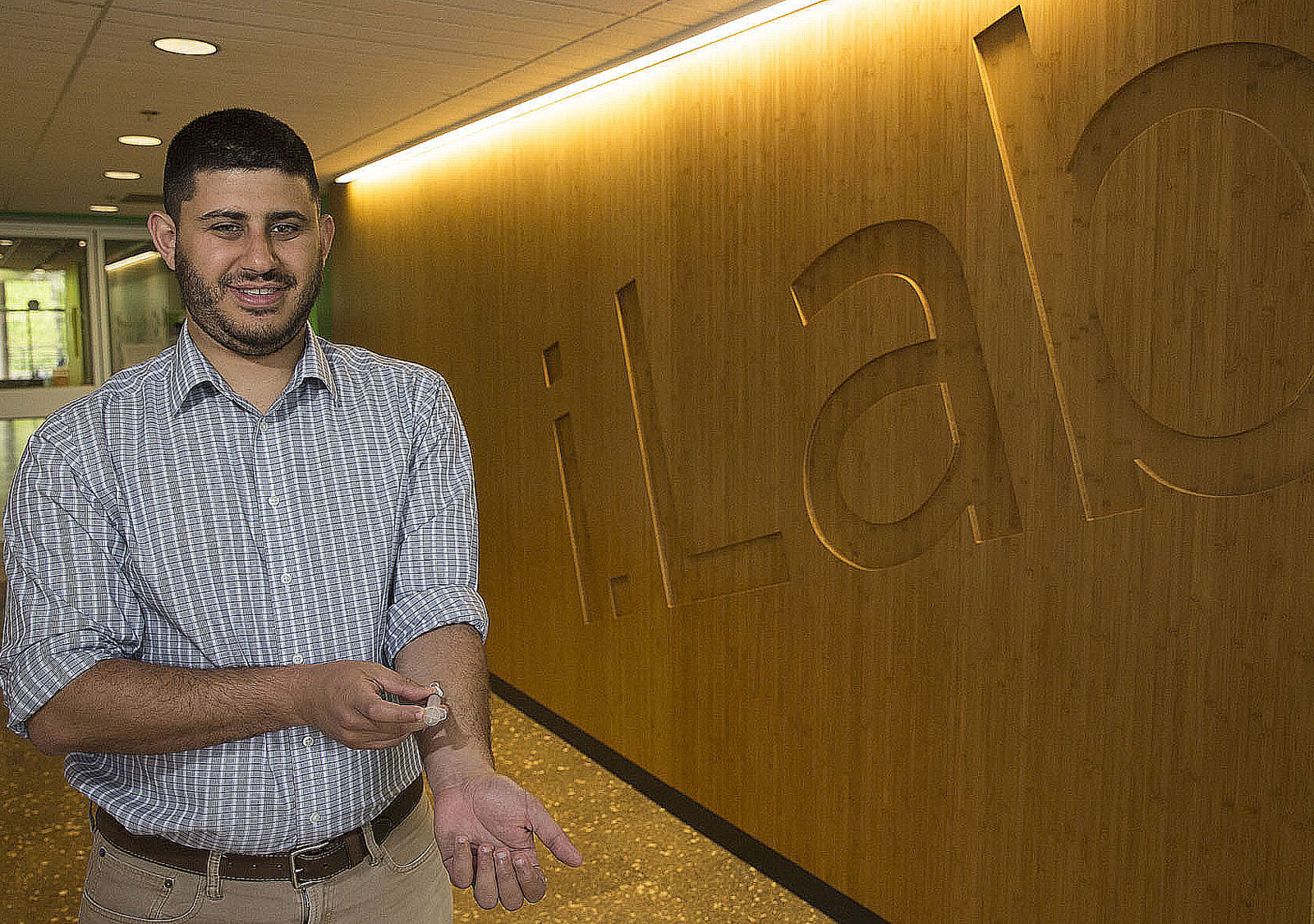Transforming a good idea into a market-viable business is usually a lengthy process. Going from a business plan to a working prototype to securing investment to selling the product often takes years.
As Peter Neems has learned, you have to be at the right stage of your life to commit to this entrepreneurial journey. After earning his M.B.A. from the University of Virginia’s Darden School of Business on Sunday, Neems will continue something he started as a student: commercializing an idea developed by a group of U.Va. undergraduate students for a microscale needle, inspired by the mosquito, that can draw blood virtually painlessly.
“Undergraduates who have a great idea aren’t necessarily interested in dropping everything and devoting themselves to pursuing it full-time,” Neems said. “They have other things they want to do. If they don’t join up with someone who has the right kind of expertise and the willingness to work with them and focus on the potential of their idea, these valuable ideas may not survive.”
During his own undergraduate years at George Washington University, Neems interned for two years at Children’s National Medical Center in Washington. He opted not to go on to medical school and instead spent five years in sales and product management at a technology company, SunGard. As a business school student, Neems was looking for an opportunity to combine his interests in medicine and technology.
He immersed himself in student activities across the University, attending the Virginia Innovation, Venture and Entrepreneurship fair, an event hosted by U.Va.’s Student Council, and becoming involved with the student-run Emerging Medical Technology Ventures club.
There he heard about some fourth-year biomedical engineering students – Andrew Andreae, Timothy Higgins and Jessica Ungerleider – who had invented a device that would make the drawing of blood a much less painful and disruptive experience. The device eliminates the need for painful lancet finger sticks, which are used hourly in some hospital care regimens, often preventing patients from sleeping through the night.
In November 2012, the trio’s idea placed second at the U.Va. Entrepreneurship Cup – and Neems was intrigued.
“I was excited about the project and knew that I could provide some expertise the team needed,” he said. The three undergraduates were focused on solving various technical problems. To make the transition from a student project into something potentially much bigger, they needed guidance on all aspects of commercialization: figuring out how exactly the device would be used in various health care settings, how best to market it to hospitals and how to raise money to develop the venture.
The undergraduates and Neems joined forces. As Neems pulled together a business plan, at his urging the team spent its first months preparing for other entrepreneurship competitions with cash prizes that could help fuel the new venture. “I thought it would be a good idea to raise as much non-diluted capital as possible,” he said.
Using just a PowerPoint presentation and a prototype produced by a 3D printer, the team won nearly $20,000 in three days in May 2013 with first-place finishes in the Jefferson Entrepreneurship Team competition at U.Va., the Governor’s Business Challenge in Richmond and the Charlotte Venture Challenge in North Carolina. “It was a whirlwind,” Neems recalled. “The four of us had to split up because two of the competitions were happening at the same time.”
The team’s work nailing down the business plan had paid off. Jacob Geiger, host of the Richmond competition, said at the time that the team’s poise answering questions from the judges made it clear they “had thought through a lot of the potential challenges they would face as they go to market.”
The young venture also won a spot in U.Va.’s i.Lab Incubator, where the team spent the summer of 2013 further refining the device and the business plan with input from medical professionals, and finding a technical product-development partner and an intellectual property lawyer.
Neems is now the chief executive officer of the venture, called ProVazo. Andreae, Higgins and Ungerleider, who graduated last year, have moved on to other endeavors but still hold a stake in the company and remain informed about the business. Neems plans to continue working full-time with ProVazo. This summer he will return to the i.Lab Incubator, working with a technical partner to develop a fully functioning prototype and refining his pitch to potential investors.
With the success of his ProVazo collaboration, Neems is a natural ambassador for the benefits of cross-Grounds student partnerships. This past academic year, as the president of Darden’s Entrepreneurship and Venture Capital Club, he organized a Technology Venture Fair to foster exactly those kinds of collaborations.
Faculty experts from across the University have been a valuable resource and will continue to be, Neems said. Those who have already been instrumental include Kathy Carr, director of the i.Lab Incubator; Beth Quatrara, a doctor of nursing practice and a clinical assistant professor of nursing; and Lawrence Gimple, a professor of medicine and cardiology.
Opportunities abound for U.Va. students from across Grounds to work together to bring inventions to life, Neems noted. “There are really smart Darden students who don’t have technical skills or confidence in their ability to come up with great ideas,” he said. “And there are students all over U.Va. who have great ideas, but need help developing them.”
Media Contact
Article Information
May 13, 2014
/content/darden-student-joins-forces-undergrads-push-painless-needle-market

